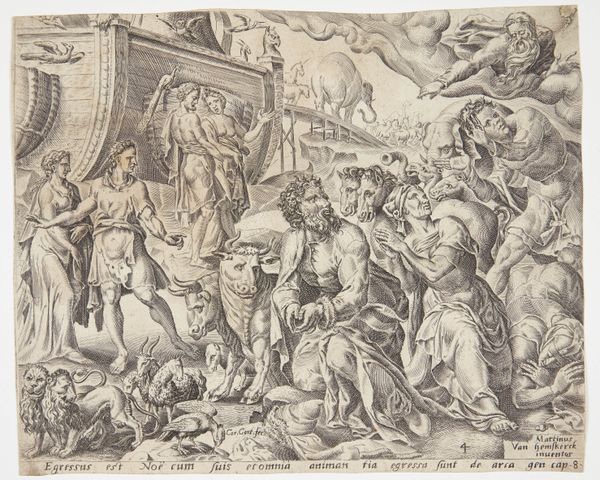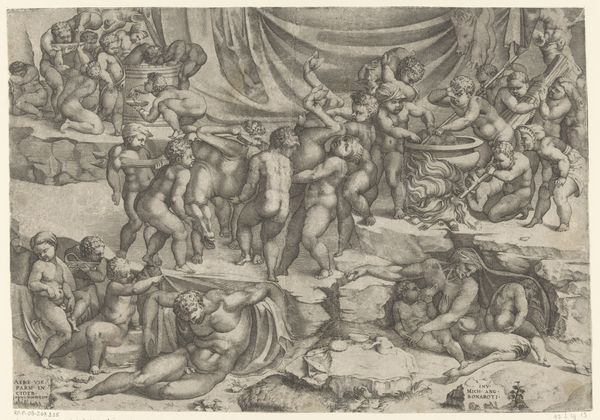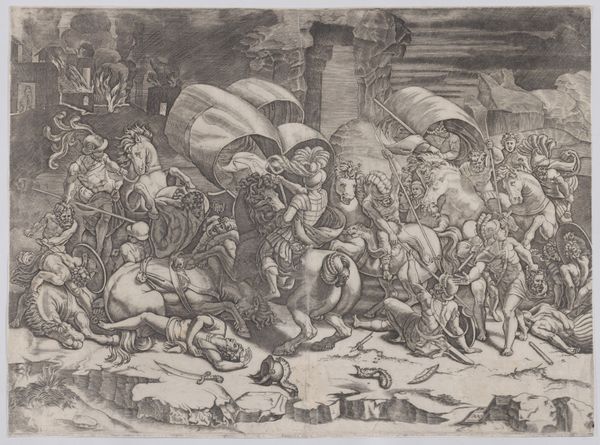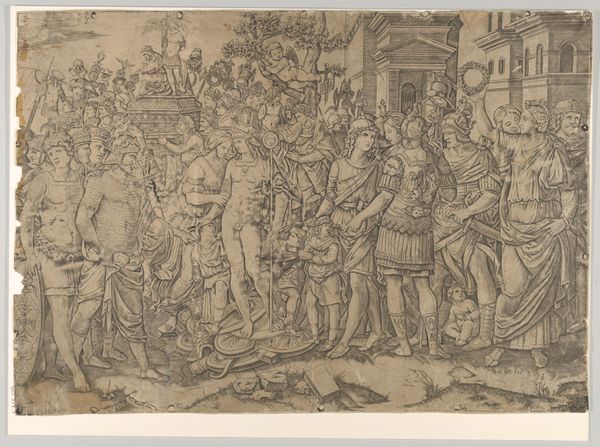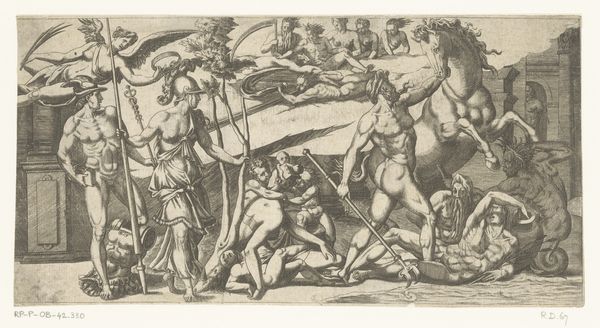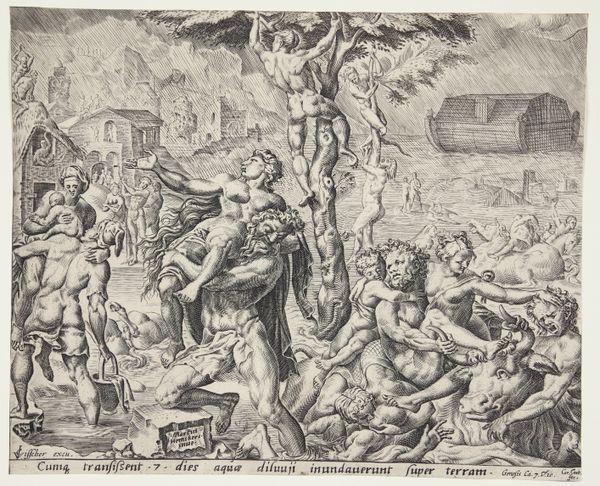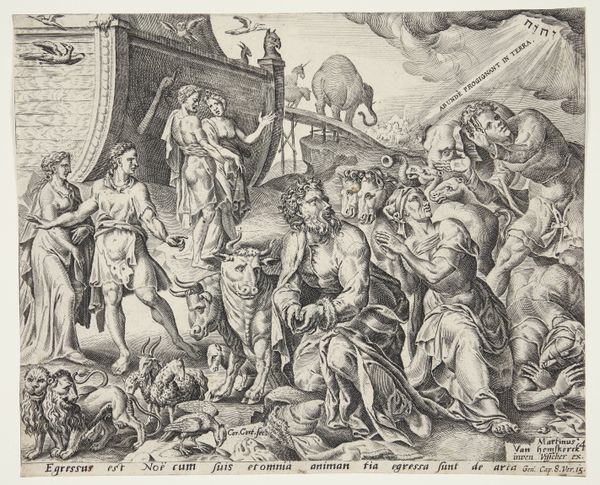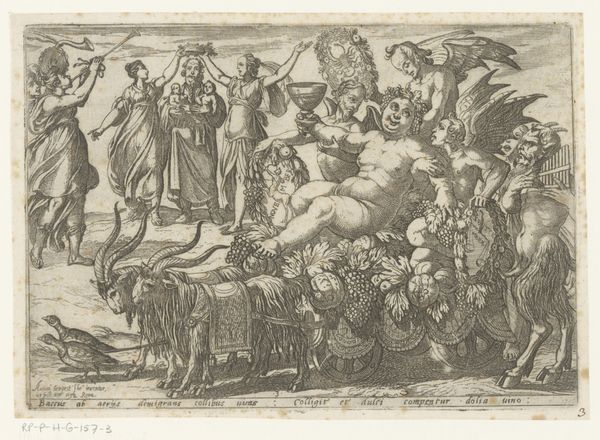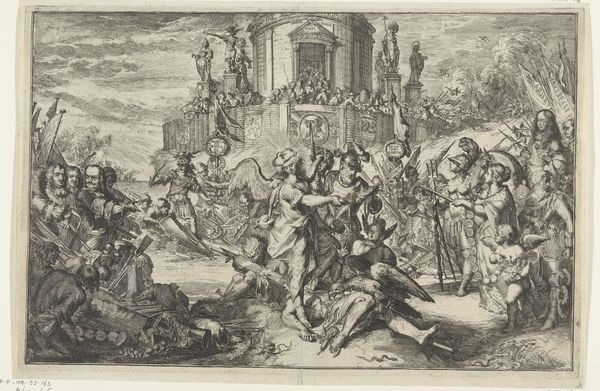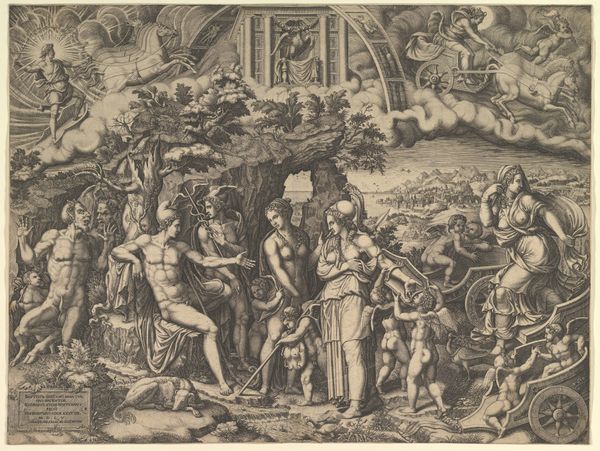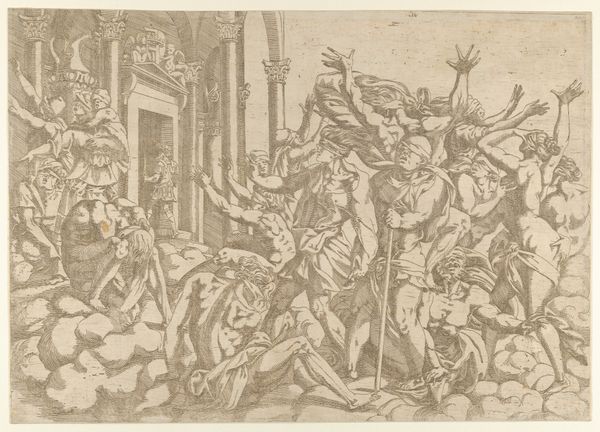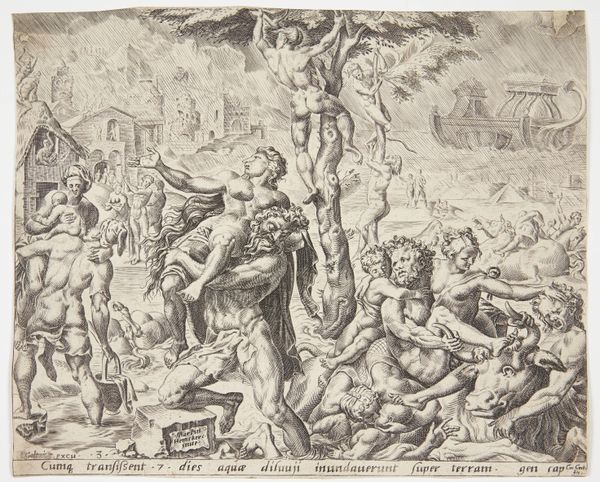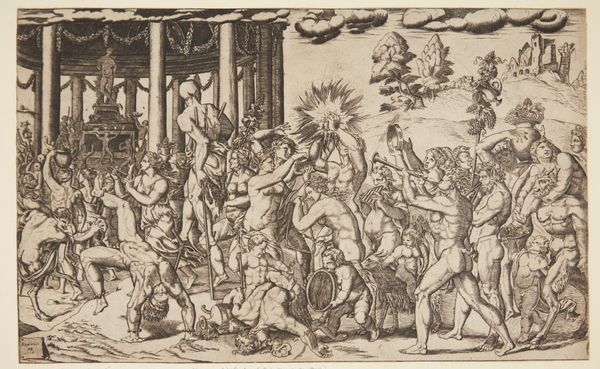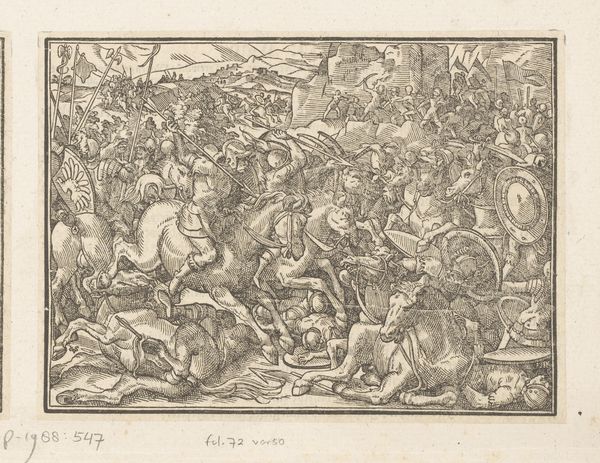
print, engraving
#
narrative-art
# print
#
figuration
#
history-painting
#
italian-renaissance
#
engraving
Dimensions: height 302 mm, width 433 mm
Copyright: Rijks Museum: Open Domain
Curator: Oh, I do love stumbling upon this print. "Edelmoedigheid van Scipio," or "The Generosity of Scipio," created anonymously in 1542. What strikes you when you first see it? Editor: The sheer density of figures! It feels like everyone is packed into this single scene. There's a lot happening, almost overwhelming. The figures appear monumental and slightly agitated in their rendering. Curator: Precisely. Now, this work is an engraving currently held at the Rijksmuseum, and it showcases a really compelling moment from Roman history. Scipio Africanus, a Roman general, has captured a beautiful woman. But instead of, you know, doing what conquering generals often did, he returns her unharmed to her fiancé. Can you imagine the inner landscape needed to make a print like this?! It’s like watching the first draft of a beautiful poem emerge from the paper. Editor: That's fascinating. So it's about self-restraint and virtue in a time of conquest. It’s also incredibly interesting that this generosity involves the autonomy of a woman being controlled by two men, rather than truly liberating her through a discourse that transcends objectification. Curator: Yes, it really gets at the heart of Renaissance ideals of leadership. The visual storytelling here is superb. Notice the gazes, the gestures... they really guide your eye through the narrative. You see the relief on the woman's face, the fiancé's gratitude, Scipio's calm nobility. Even though we can't know the identity of the original artist, it seems safe to say this was quite an achievement. Editor: Absolutely. And by putting this virtuous act on display, the artist is definitely participating in a tradition of art being not just something beautiful to look at but also didactic—that is, offering the viewer lessons about what to believe or how to behave. Curator: Yes, like a morality play captured in ink. Isn't it amazing how a simple print can be so filled with complexities? Editor: Definitely. It reminds us how art from the past continues to raise uncomfortable but incredibly worthwhile questions for us today.
Comments
No comments
Be the first to comment and join the conversation on the ultimate creative platform.
